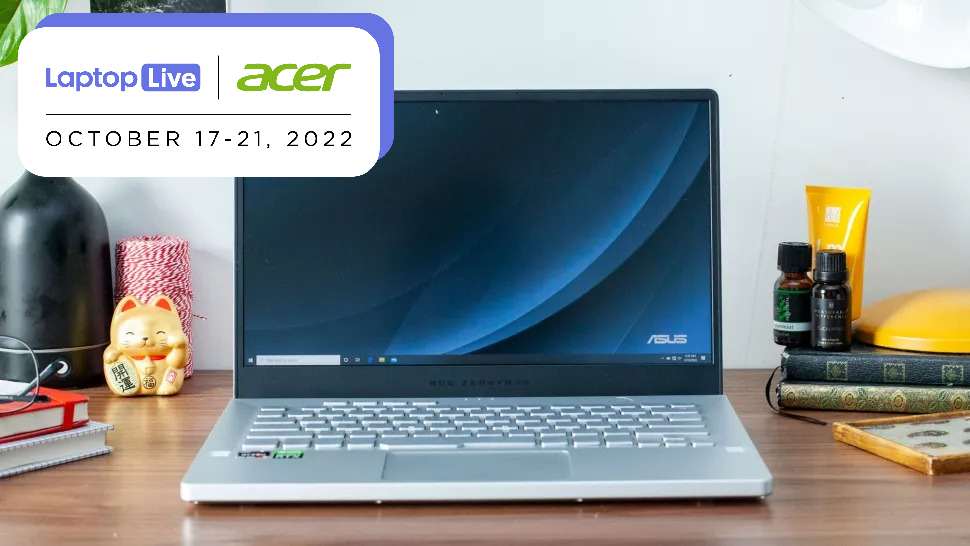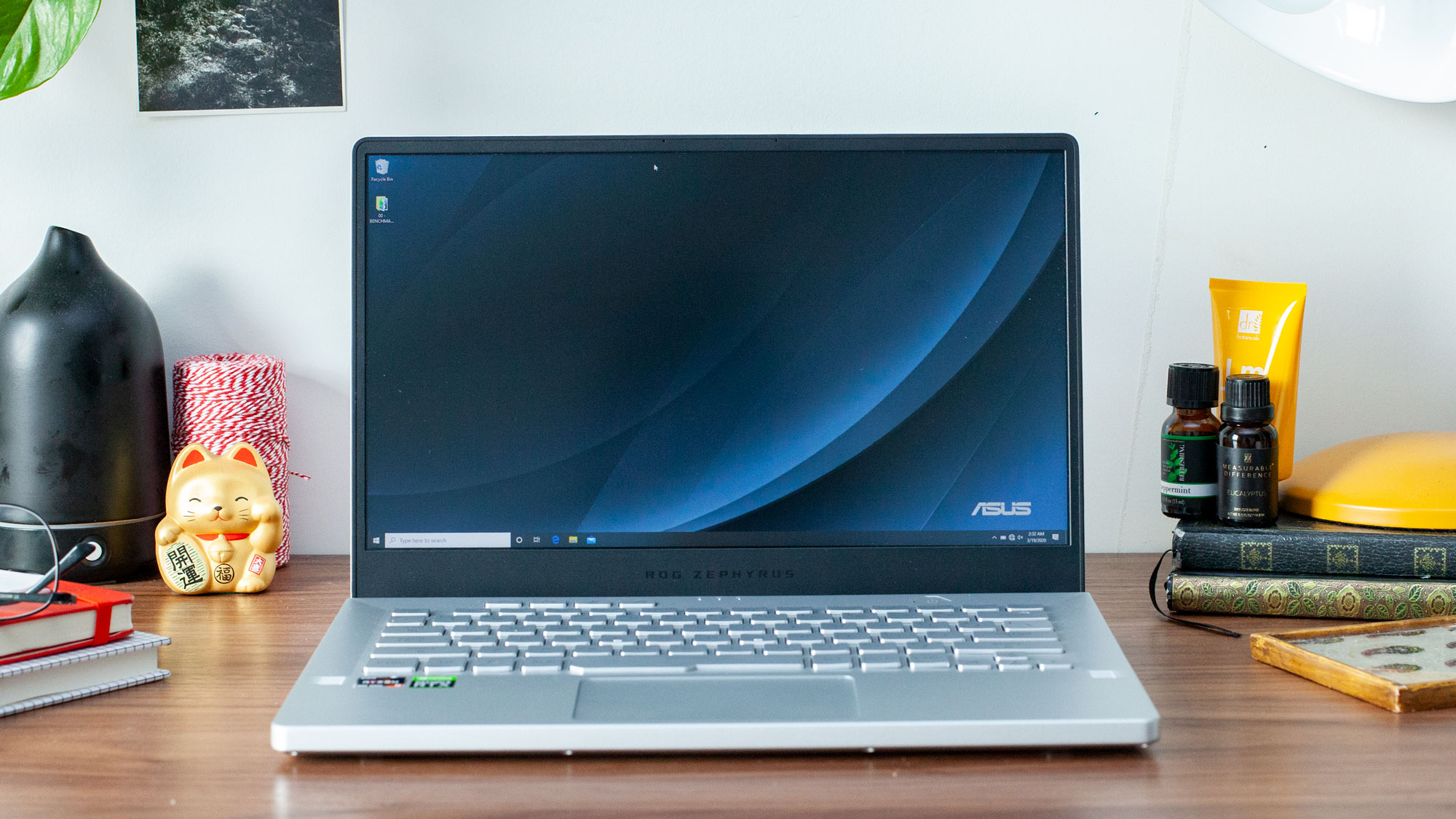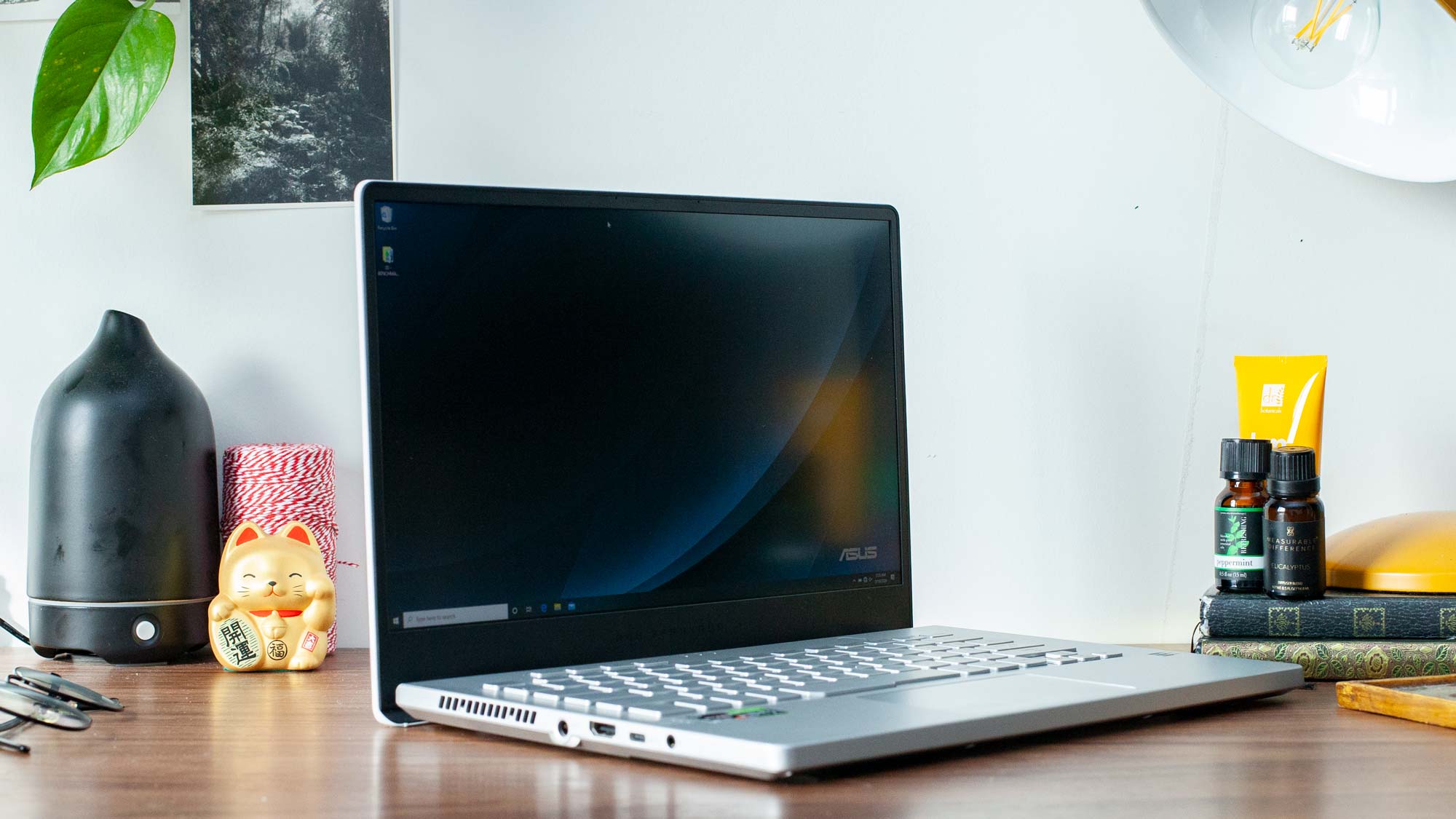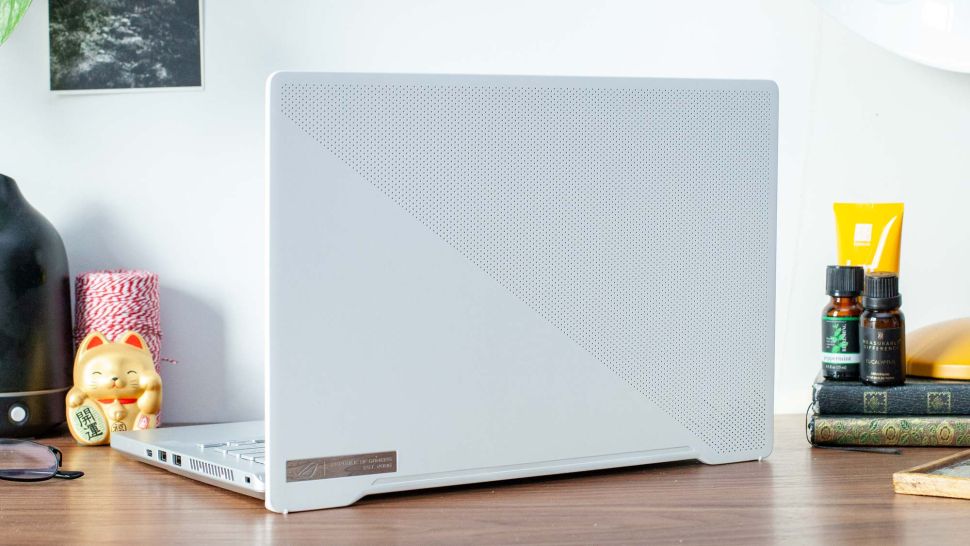How a gaming laptop with 12-hour battery life saved AMD — and Intel, too
AMD and Intel should kiss the ROG Zephyrus G14’s feet

“Say what?!” the Laptop Mag team yelled in disbelief when our editor Rami Tabari told us that a gaming laptop racked up a battery runtime of more than 11 hours.
“There must be some mistake!” one of my skeptical colleagues said. “Did you ask our lab tester to run the battery test again?” Because there’s no way a gaming rig could possibly last nearly 12 hours — it’s a gaming laptop for chrissakes! At best, gaming laptops survive no more than six hours.
“I did! He ran it twice. It’s official. This is our longest lasting gaming laptop ever,” Tabari said. Murmurs of awe and incredulity filled the room.

What on earth was responsible for this gaming laptop’s jaw-dropping, energy-efficient performance? We looked under the hood and spotted an almighty AMD Ryzen 4000-series APU in all of its glory. “Intel,” I thought to myself. “You’re in big trouble!”
For years, AMD was playing catch up with Intel in the laptop market, but in 2020, the tables began to turn in AMD’s favor.
The AMD gaming laptop that smoked its Intel-based rivals
If you’re drag racing against a friend, and you’re in the lead, you wouldn’t stop at McDonald’s drive-thru to get a Big Mac, would you? Although you’re currently in first place, it’s only a matter of time before your friend catches up, so you’d stay the course until you reach the finish line.
In this scenario, Intel is the lead drag racer, unrivaled in the laptop mobile processor market for the better half of a decade with its “Core” CPUs. AMD, on the other hand, despite its efforts, was struggling to surpass the chipset maker. However, somewhere along the way, Intel got complacent and rested on its laurels. That’s when AMD zipped by Intel on the racetrack with the introduction of its incredible Ryzen 4000-series chips.
Sign up to receive The Snapshot, a free special dispatch from Laptop Mag, in your inbox.
When they hit the scene in 2020, the processors outperformed Intel’s dual 10th Gen chips (Ice Lake and Comet Lake) in many of our benchmarks while delivering mind-blowing efficiency. However, AMD’s impact didn’t truly hit us until the test results for the Asus ROG Zephyrus G14 came in.

On the Geekbench 4.3 overall performance test, the AMD Ryzen 9-4900HS chip inside the ROG Zephyrus G14 delivered a spectacular multi-core score of 30,181. Its rival, the MSI GS66 Stealth, packed with an Core i7-10750H processor (one of Intel’s 10th Gen Comet Lake H-Series processors), could only muster a multi-core score of 24,304.
“No big deal,” you may be thinking, “that’s just one laptop.” Oh, no, no. There’s more! The Alienware m17 r3, a stunning rig that features a Tobii eye tracker, came with a powerful 10th Gen Intel Core i9-10980HK processor, but still, it failed to surpass the ROG Zephyrus G14 a 29,995. Ooh! So close, but yet, so far!
| Row 0 - Cell 0 | Asus ROG Zephyrus G14 | MSI GS66 Stealth | Alienware m17 r3 |
| CPU | AMD Ryzen 9-4900HS processor | Intel Core i7-10750H CPU | 10th Gen Intel Core i9-10980HK processor |
| Geekbench 4.3 score (higher is better) | 30,181 | 24,304 | 29,995 |
Not convinced of the Ryzen 4000-series’ mind-blowing performance yet? TechSpot secured an apples-to-apples comparison between the Ryzen 7 4800H processor and the Intel i7-10750H CPU. Both were placed inside a laptop with the same configurations: an Nvidia GeForce RTX 2060 GPU, 16GB of dual-channel DDR4 memory, a 512GB M.2 SSD, and identical 1920 x 1080-pixel, 144Hz IPS displays. The AMD-based laptop pulled out ahead on the Cinebench R20 test with a score of 4,515, which is 60% better than the Intel-outfitted laptop (2,821).
Hell, the AMD model also encoded videos 49% faster, obliterated its Intel rival on the Blender benchmark, crushed its competitor in battery life, which we’ll get to in the next section.
AMD shocked the world with its power efficiency
The Laptop Mag team tests the battery runtimes of all the laptops we review and we keep a record of them. As such, we can calculate the average battery life of a typical gaming laptop. At the time we received the ROG Zephyrus G14, the mean runtime for gaming rigs was four hours and 26 minutes — just to give you some perspective on what the market was offering.
| Row 0 - Cell 0 | ROG Zephyrus G14 | MSI GS66 Stealth |
| CPU | AMD Ryzen 9-4900HS processor | Intel Core i7-10750H CPU |
| Battery life | 11 hours and 32 minutes | 6 hours and 36 minutes |
Imagine our surprise when we discovered that the ROG Zephyrus G14 lasted a whopping 11 hours and 32 minutes on a charge. A gaming laptop that lasts nearly 12 hours? That’s damn-near unheard of — even to this day.
The MSI GS66 Stealth survived 6 hours and 36 minutes, which isn’t half bad for a gaming laptop, but nowhere near what the Asus laptop could accomplish. The Alienware m17 r3 could only last for a measly 2 hours and 30 minutes. Womp, womp, womp!
The aforementioned Ryzen 7 4800H CPU-packed laptop TechSpot got its hands on bested its Intel counterpart by nearly an hour.
For a long time, we gave OEMs mercy for launching gaming laptops with less-than-impressive battery runtimes. With all the power needed to run a smooth, seamless PC gaming experience, it’s expected that there’ll be energy-guzzling components packed inside. However, when a 12-hour gaming laptop hit the scene, AMD wagged an accusatory finger at Intel like, “Aht, aht, aht! Low runtimes aren’t cutting it anymore!”

Since then, I’ve been less forgiving of gaming laptops with poor battery life. We can have our cake and eat it, too. In other words, if the AMD Ryzen 4000-series chips can deliver excellent performance and power efficiency, why can’t Intel do the same?
Why was the AMD inside the ROG Zephyrus G14 such a beast?
As mentioned, Intel always sat on the throne as the superior choice for laptop CPUs, but when the ROG Zephyrus G14 hit our labs with a beastly Ryzen 4000-series chip, Intel’s reign was threatened.
When AMD announced its new 4000-series mobile processors at CES 2020 under the code name “Renoir,” it boasted that it was the first processor built on the chipmaker’s 7nm architecture. The line, packing AMD’s Zen 2 cores, consisted of eight SKUs that feature a wide range of configurations that climb up to 8 cores and 16 threads.

AMD officially launched its Ryzen mobile 4000 family in mid-March of 2020 and boasted “breakthrough power efficiency” and “uncompromising performance” for gamers and content creators who want thin-and-light laptops, but we were not expecting AMD to disrupt the market the way that it did. Admittedly, we were shook.
When we take a look at the Ryzen 9 4900HS APU specifically, the chip inside the game-changing ROG Zephyrus G14, it’s important to note its suffix: HS. AMD emphasized that the HS chips in its 4000-series lineup require OEMs to work closely with the chipmaker to design laptops with other highly efficient components, including top-of-the-line SSDs, low-power memory, power-efficient screens, and more. That being said, with AMD having a demanding say in how Ryzen 9 4900HS-outfitted laptops are constructed, ensuring high-performance/low-energy outputs across the components that matter, it’s no wonder that the ROG Zephyrus G14 shook up the gaming laptop market with its impressive benchmarks.
Bottom line
While the theme of this article maintains that the ROG Zephyrus G14 “saved” AMD, meaning it allowed the masses to regain trust in the chipmaker’s potential to take down Intel, in some ways, the AMD-packed gaming laptop saved Intel, too.
Intel was indisputably the king of the laptop chip industry, but after several years of kicking its feet up and resting on its laurels, it unwittingly allowed longtime rival AMD to catch up. Perhaps this was the kick in the butt Intel needed to wake up and keep innovating. Intel is now offering its 12th Gen Alder Lake processors with its top-tier Intel Core i9-12900HK CPU, which offers six more physical cores than AMD’s current top offering; the Ryzen 9 6980HX chip. However, it’s worth noting that the Ryzen 6000-series has a more au courant manufacturing process (6nm vs. 10nm).
AMD proved that it’s a formidable opponent with the release of its 4000-series chips, and stepped on the accelerator when it introduced its Ryzen 6000-series processors, but Intel finally quit stopping for fast-food at drive-thrus. According to benchmarks from sites like Notebookcheck and Nanoreview, Intel regained its footing in the laptop chip market — for now.
Kimberly Gedeon, holding a Master's degree in International Journalism, launched her career as a journalist for MadameNoire's business beat in 2013. She loved translating stuffy stories about the economy, personal finance and investing into digestible, easy-to-understand, entertaining stories for young women of color. During her time on the business beat, she discovered her passion for tech as she dove into articles about tech entrepreneurship, the Consumer Electronics Show (CES) and the latest tablets. After eight years of freelancing, dabbling in a myriad of beats, she's finally found a home at Laptop Mag that accepts her as the crypto-addicted, virtual reality-loving, investing-focused, tech-fascinated nerd she is. Woot!

